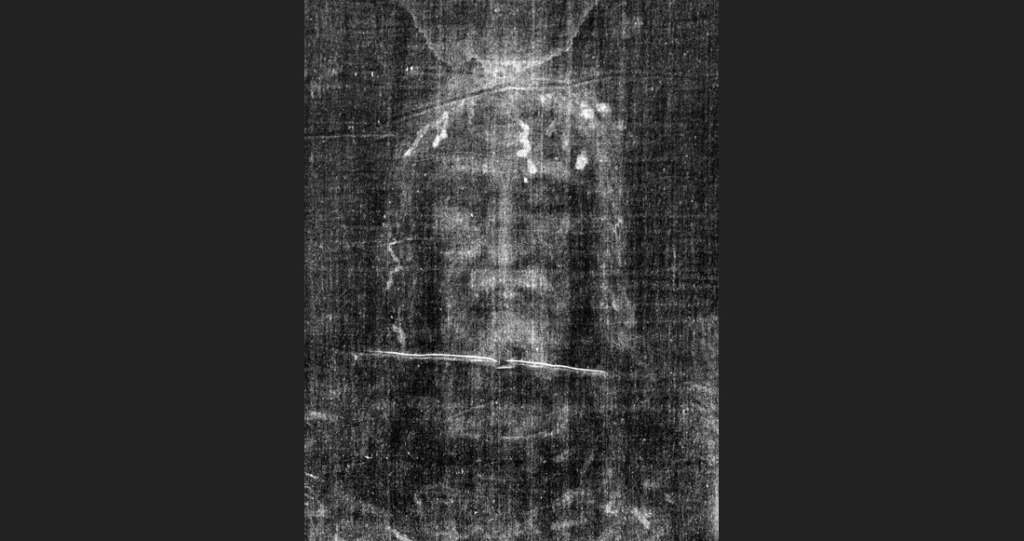Evidence links Divine Mercy with Shroud of Turin
Thank you for the articles about the Divine Mercy message in the April 1 issue. In addition, the issue led with a seemingly unrelated cover story describing parish presentations by Mike Pietrzyk of Vinton about evidence supporting his view that the Shroud of Turin is the burial cloth of Jesus. There is intriguing evidence of a correlation between the Original Divine Mercy Image and the Shroud of Turin.
Zbigniew Treppa, a professor at the University of Gdansk, Poland, maintains the “image from the Shroud of Turin is linked to the image from the apparitions of St. Faustina.”
He points out that Jesus “Himself [w]as the model for the [Divine Mercy] image” and that researchers have discovered a “coincidence of the anatomical features” when a photograph of the face on the Shroud of Turin was superimposed on a similarly sized print of the Original Divine Mercy Image. The Divine Mercy website, divinemercy.org, states: “on both images there is the same distance between the pupils, the nose is of practically the same length, the form of the lips is identical, the moustache and the beard are of the same cut; the hair falls at the sides in the same way.”
This result was “remarkable” because the artist apparently did not have a photo of the Shroud of Turin and had iteratively repainted the face at least 10 times over a six-month period at St. Faustina’s request. Professor Treppa claims that “if you wanted to apply the probability calculus, you would have to do at least 1,000 face images to finally get proportions such as the ones on the Shroud.”
This “practically perfect correspondence” is more evidence of the divine origin of the Original Image of Divine Mercy and the Shroud of Turin.
-J. T. Tokarz, Henrico
We need true men
Thank you for your article on St. Joseph men’s groups in the diocese (March 18). In this time of difficulties in society and in the Church, crisis of families, “pride” events, and fathers either absent or ineffective, it is more important than ever that men’s groups form in parishes and learn to support and defend their faith and each other. The turning away from God, especially by men, has had a negative impact on the Church and the world.
Men need to learn to be men, not macho, but true men. Manhood means being a leader, an example for others, and, if married, the head of the family (or, as our deacon says, the first servant of the family).
Here at St. Stephen, Martyr, in Chesapeake, we are blessed with several men’s groups, including the Knights of Columbus, Men of St. Joseph International, Exodus 90, a monthly men’s breakfast led by our deacon, and even a “literary circle” (book club) where we discuss Catholic/Christian literature.
The key to a successful men’s group is incorporating Jesus and the Church into the group. The early Church fathers knew this. “Try to gather together more frequently to give thanks to God and to praise him. For when you come together frequently, Satan’s powers are undermined, and the destruction that he threatens is done away with in the unanimity of your faith,” wrote St. Ignatius of Antioch in his “Letter to the Ephesians.”
Men looking to increase in spirituality should find a few others in their parish seeking spiritual growth (they’re there, if you look) and start your own group, keeping in mind that Jesus is the prime member of the group.
Remember Jesus’s promise: “where two or three are gathered together in my name, there am I in the midst of them” (Mt 18:20).
-Tom Klocek, Chesapeake
Burial cloth is supposed to be two pieces
In the Easter readings, John 20:6-7 says this: “When Simon Peter arrived after him, he went into the tomb and saw the burial cloths there, and the cloth that had covered his head, not with the burial cloths but rolled up in a separate place.”
This passage is clearly saying that Jesus’ burial cloth was in two pieces, one for the body, and a separate one for the head. However, the article in The Catholic Virginian (April 1) shows a burial shroud that is clearly a single piece of cloth. To suggest therefore that the “Shroud of Turin” is an authentic burial shroud of Our Savior would seem to directly controvert the account of John 20:7.
In light of this, why are we all but insisting that the Shroud of Turin is the authentic burial cloth of Jesus?
-Christopher Murray
Charlottesville

